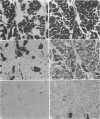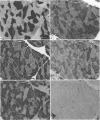Abstract
The human cricopharyngeus muscle was investigated by dissection and by histological, histochemical and morphometric methods. Muscle fibres in the cricopharyngeus were found to be similar in appearance to those of the lateral part of the quadriceps femoris, although they were generally much smaller and more variable in size. The endomysial connective tissue was markedly increased in the cricopharyngeus and muscle spindles were not found. Certain features normally considered to be pathological were also noted in the cricopharyngeus muscles. The fibre type population consisted mainly of histochemically 'slow-twitch' richly oxidative fibres. This finding is consistent with the proposed function of this muscle in its sphincteric role in deglutition, vomiting, eructation and in the control of aerophagia.
Full text
PDF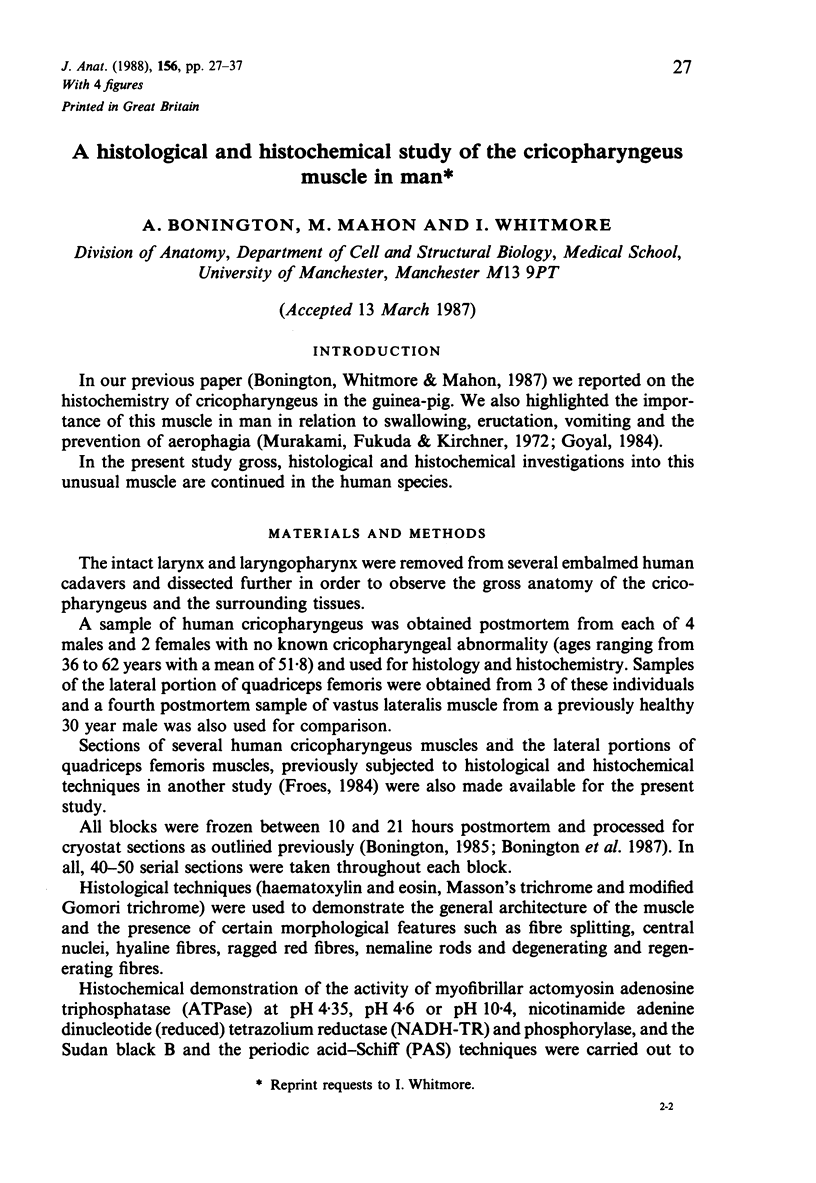
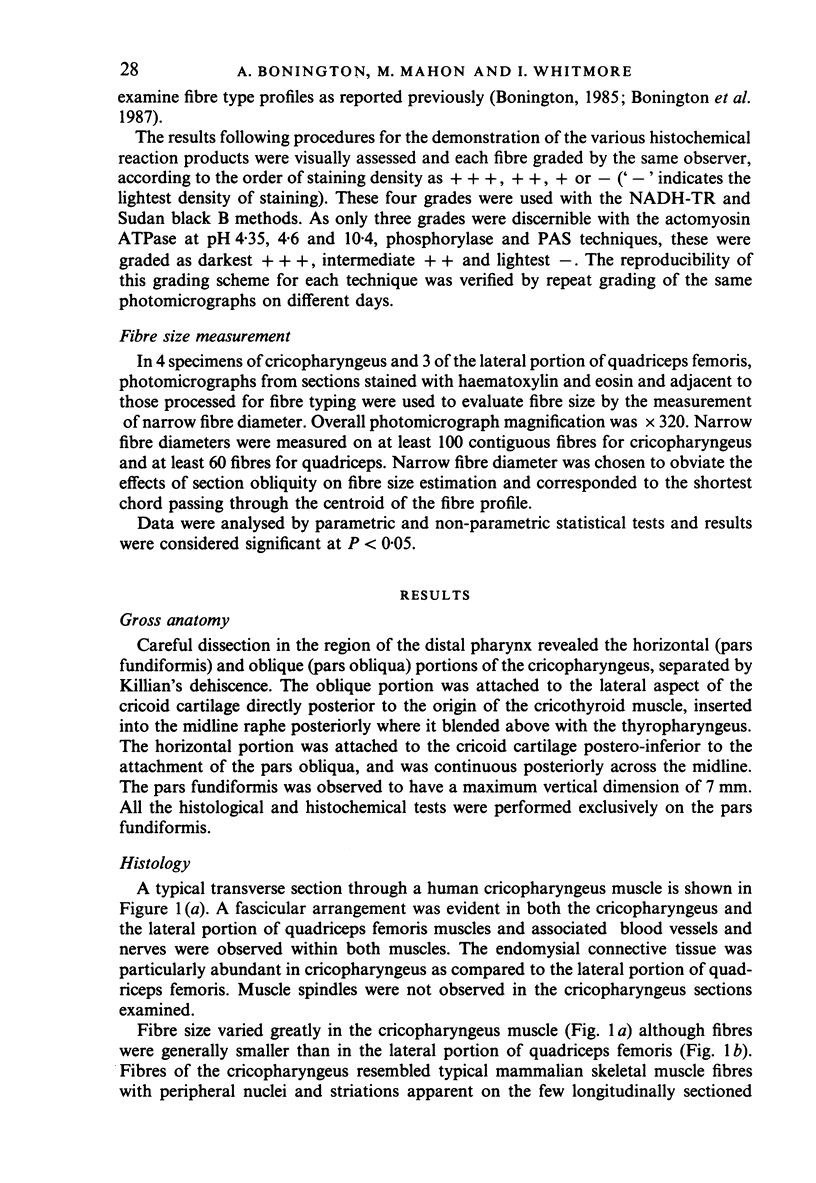
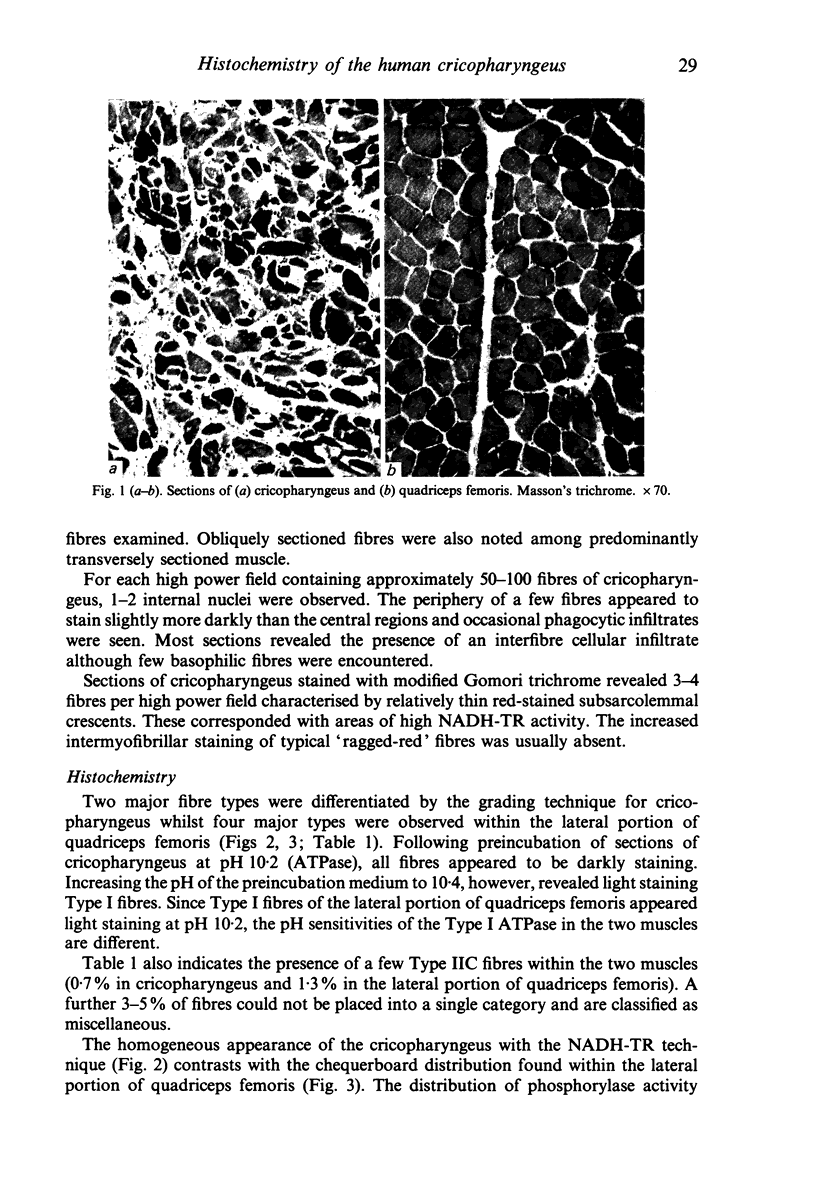
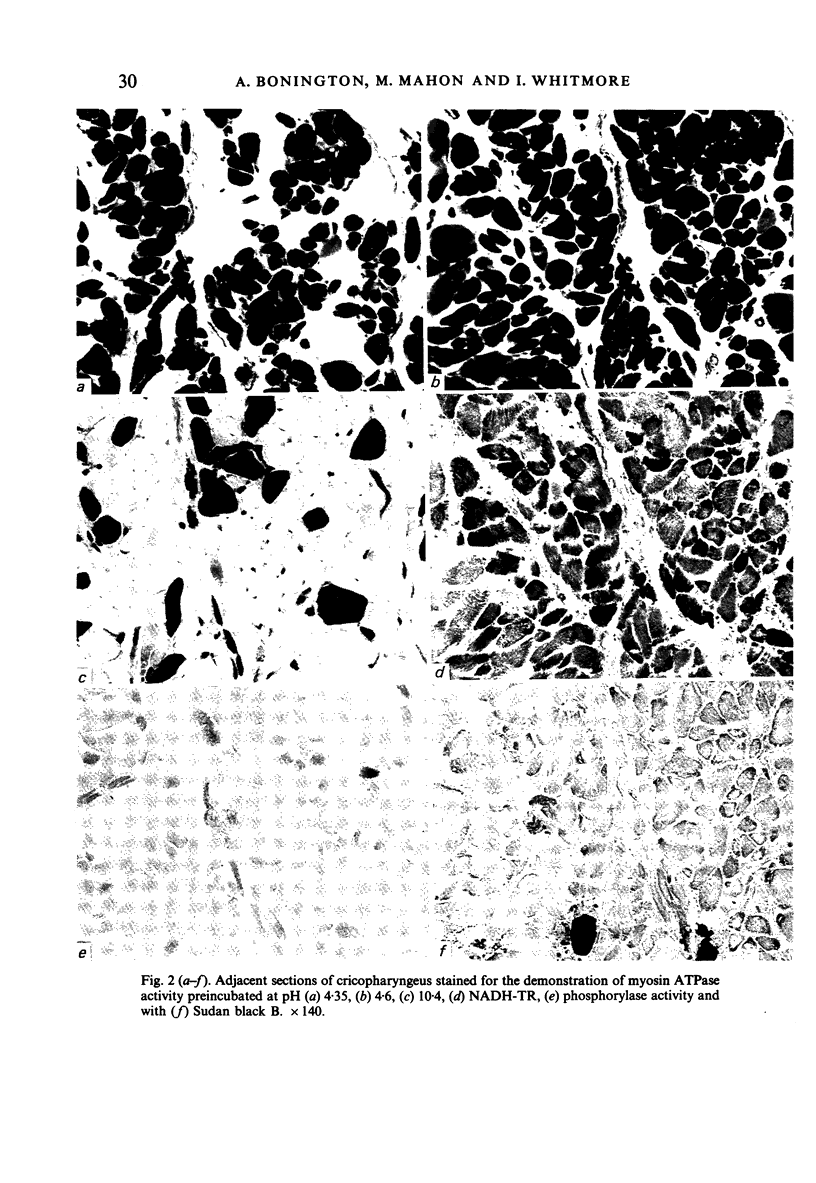
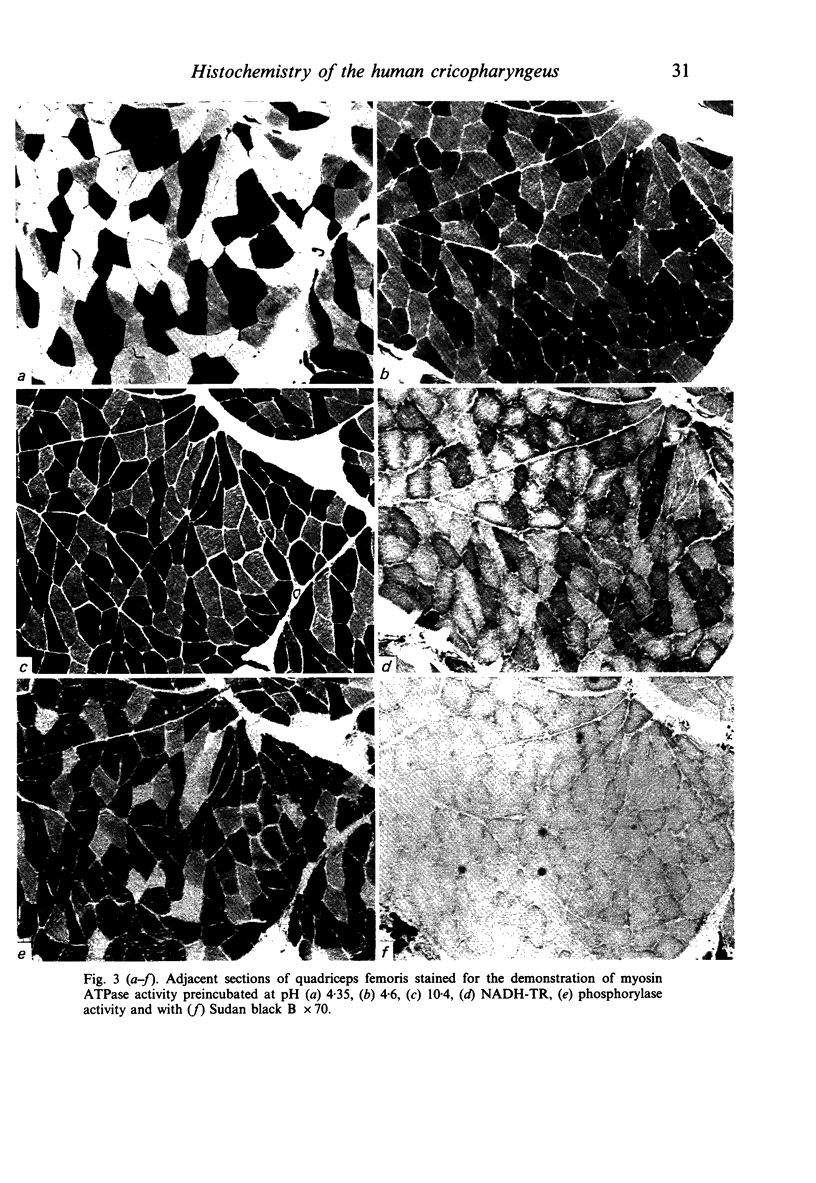
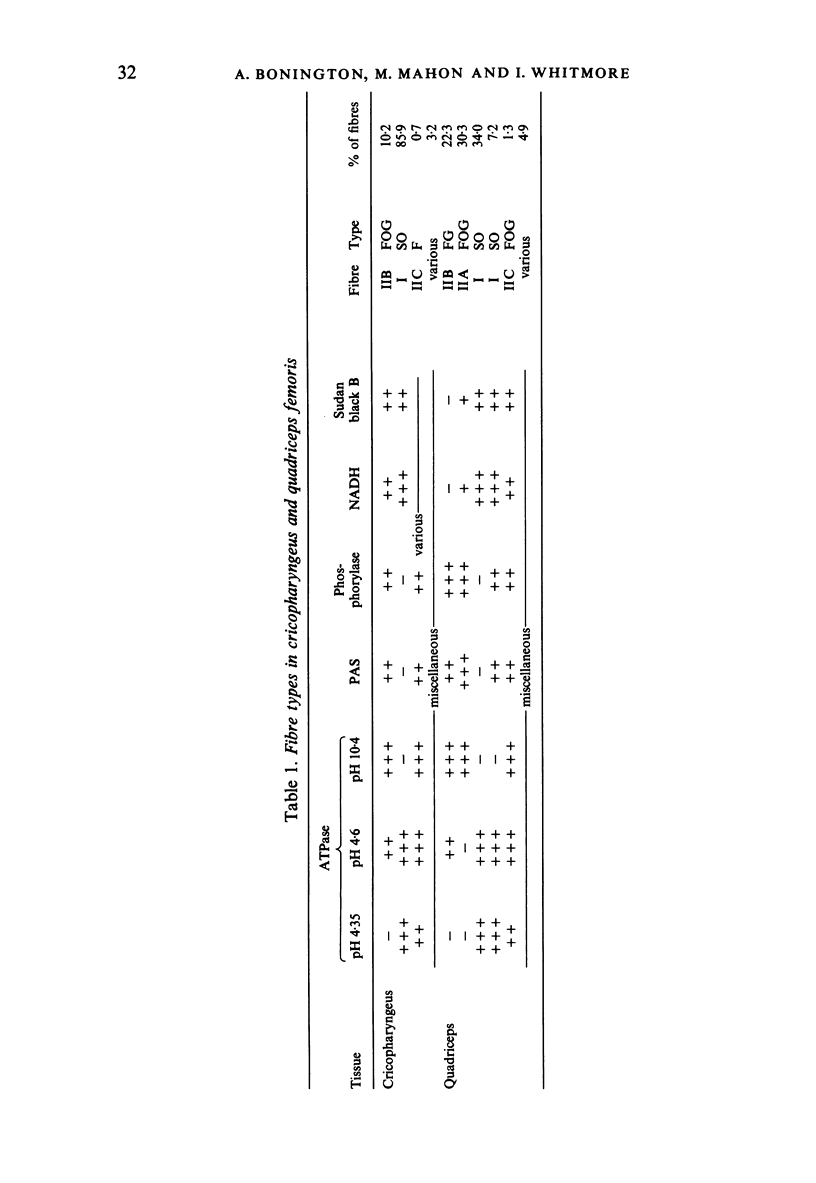
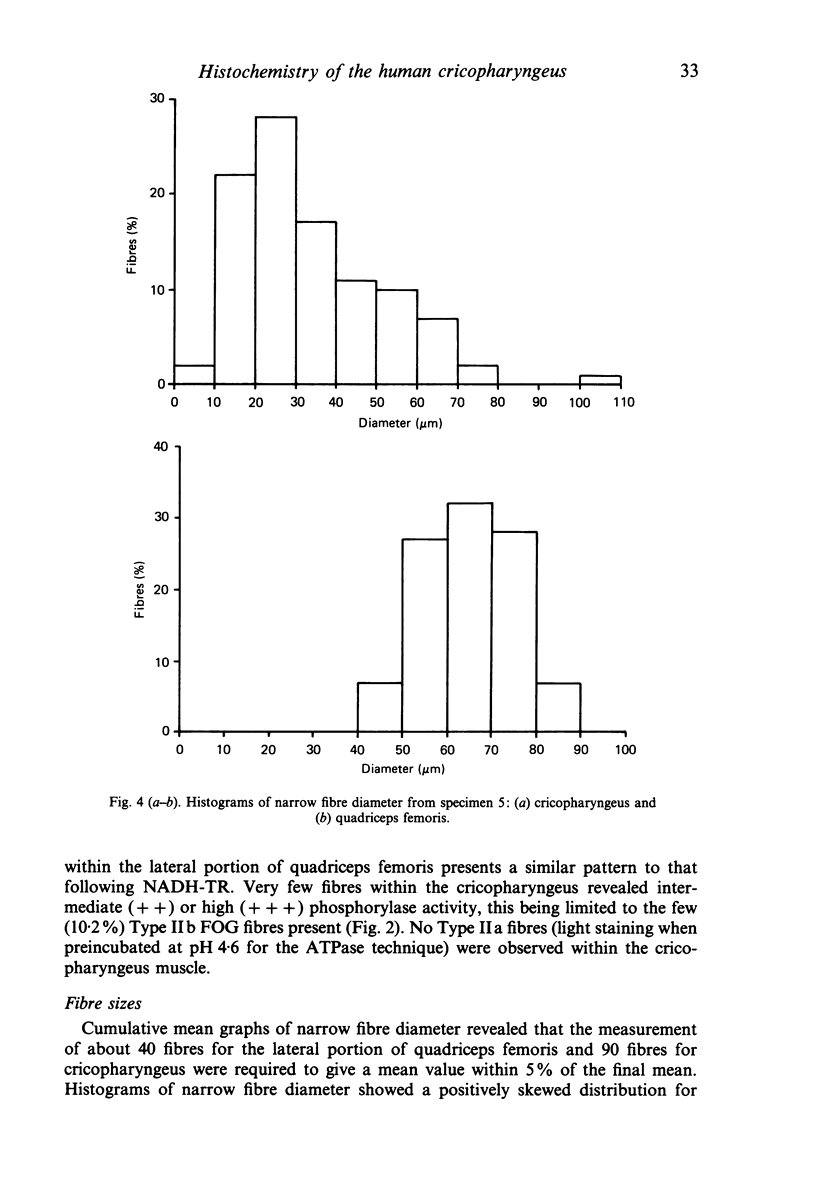
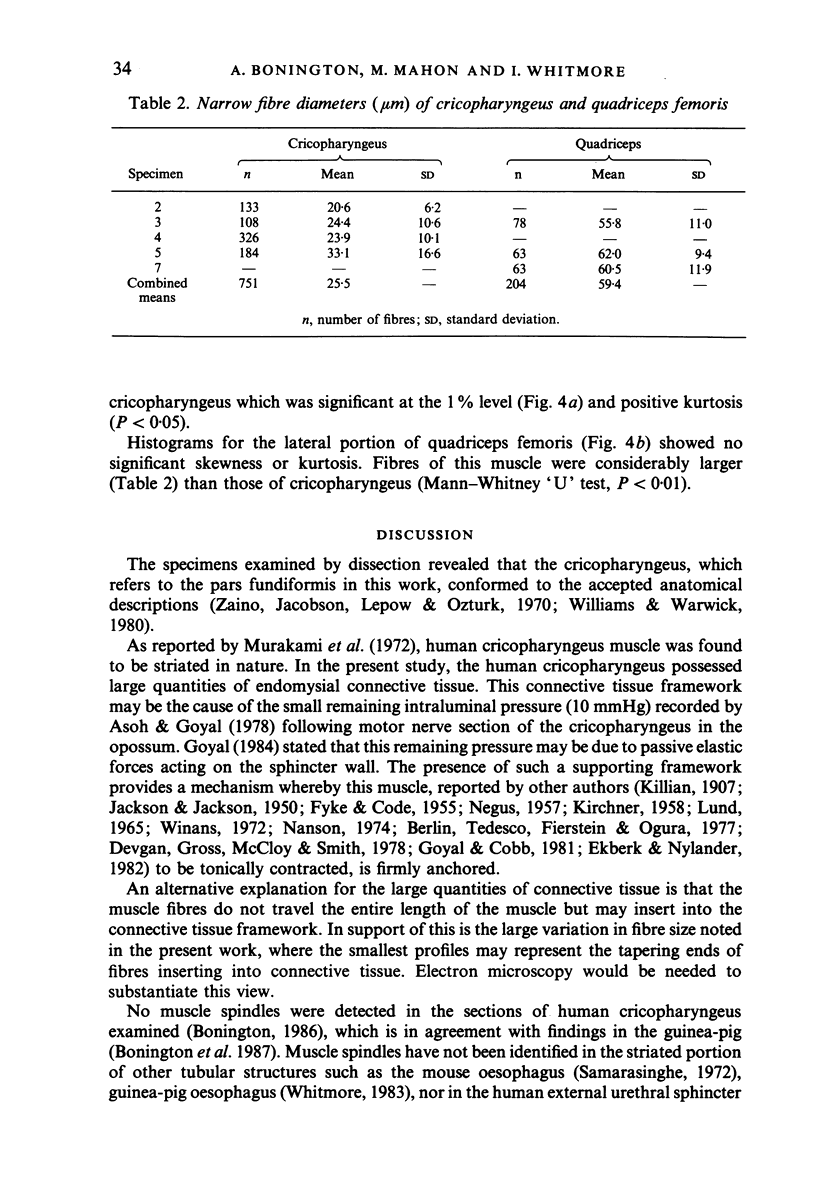
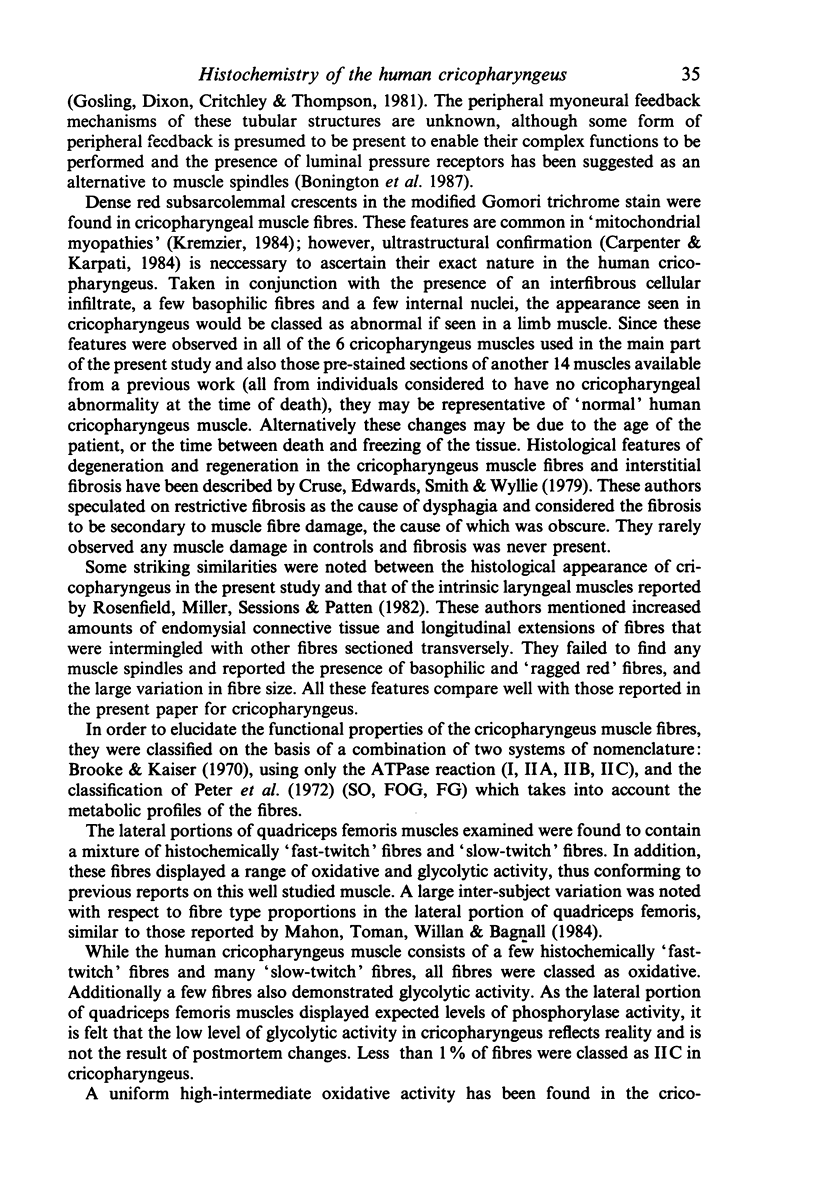
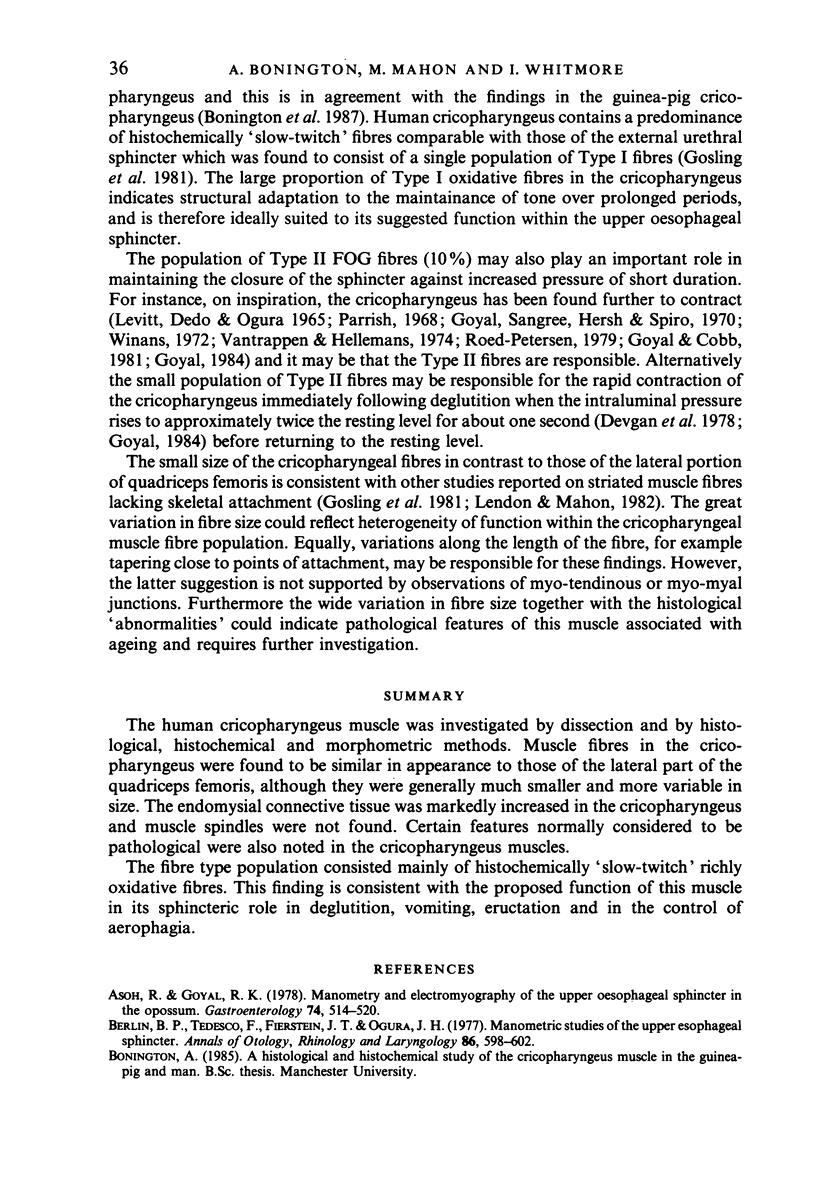
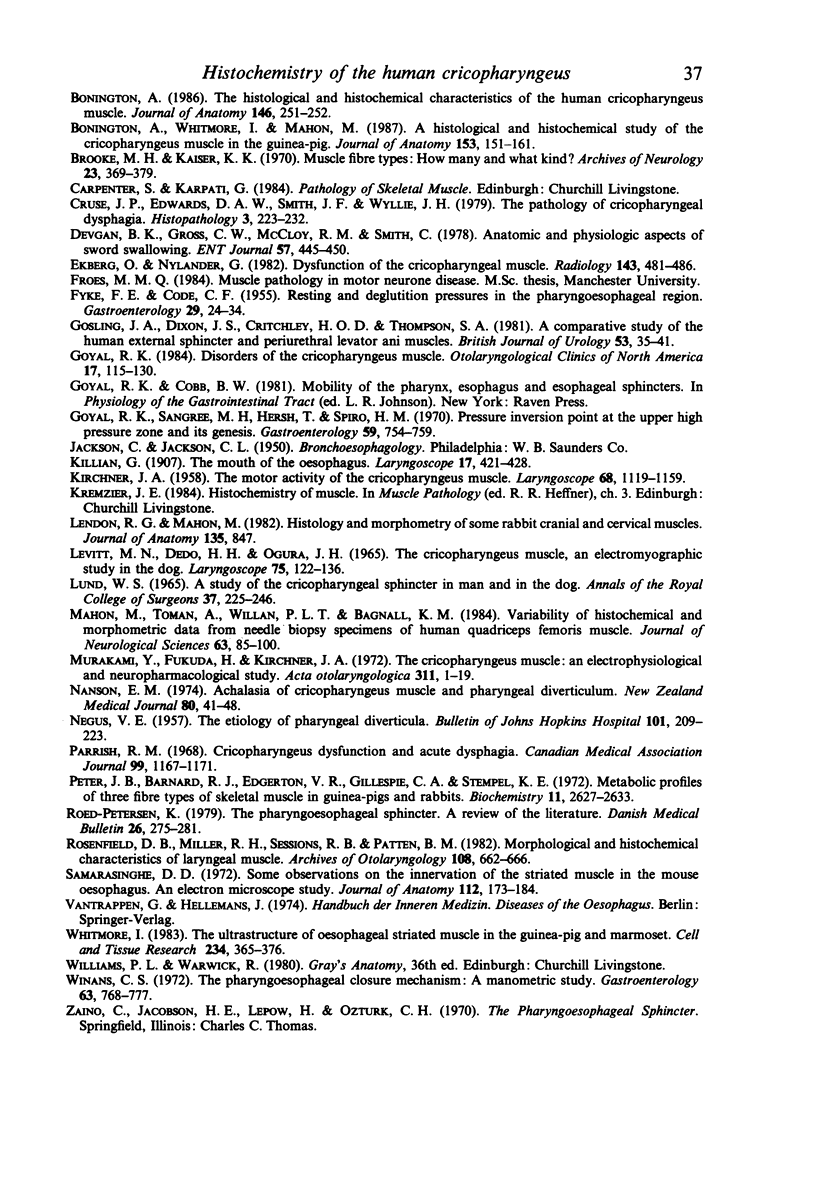
Images in this article
Selected References
These references are in PubMed. This may not be the complete list of references from this article.
- Asoh R., Goyal R. K. Manometry and electromyography of the upper esophageal sphincter in the opossum. Gastroenterology. 1978 Mar;74(3):514–520. [PubMed] [Google Scholar]
- Berlin B. P., Fierstein J. T., Tedesco F., Ogura J. H. Manometric studies of the upper esophageal sphincter. Ann Otol Rhinol Laryngol. 1977 Sep-Oct;86(5 Pt 1):589–602. [PubMed] [Google Scholar]
- Bonington A., Whitmore I., Mahon M. A histological and histochemical study of the cricopharyngeus muscle in the guinea-pig. J Anat. 1987 Aug;153:151–161. [PMC free article] [PubMed] [Google Scholar]
- Brooke M. H., Kaiser K. K. Muscle fiber types: how many and what kind? Arch Neurol. 1970 Oct;23(4):369–379. doi: 10.1001/archneur.1970.00480280083010. [DOI] [PubMed] [Google Scholar]
- Cruse J. P., Edwards D. A., Smith J. F., Wyllie J. H. The pathology of a cricopharyngeal dysphagia. Histopathology. 1979 May;3(3):223–232. doi: 10.1111/j.1365-2559.1979.tb02999.x. [DOI] [PubMed] [Google Scholar]
- Devgan B. K., Gross C. W., McCloy R. M., Smith C. Anatomic and physiologic aspects of sword swallowing. Ear Nose Throat J. 1978 Oct;57(10):445–450. [PubMed] [Google Scholar]
- Ekberg O., Nylander G. Dysfunction of the cricopharyngeal muscle. A cineradiographic study of patients with dysphagia. Radiology. 1982 May;143(2):481–486. doi: 10.1148/radiology.143.2.7071351. [DOI] [PubMed] [Google Scholar]
- FYKE F. E., Jr, CODE C. F. Resting and deglutition pressures in the pharyngoesophageal region. Gastroenterology. 1955 Jul;29(1):24–34. [PubMed] [Google Scholar]
- Gosling J. A., Dixon J. S., Critchley H. O., Thompson S. A. A comparative study of the human external sphincter and periurethral levator ani muscles. Br J Urol. 1981 Feb;53(1):35–41. doi: 10.1111/j.1464-410x.1981.tb03125.x. [DOI] [PubMed] [Google Scholar]
- Goyal R. K. Disorders of the cricopharyngeus muscle. Otolaryngol Clin North Am. 1984 Feb;17(1):115–130. [PubMed] [Google Scholar]
- Goyal R. K., Sangree M. H., Hersh T., Spiro H. M. Pressure inversion point at the upper high pressure zone and its genesis. Gastroenterology. 1970 Nov;59(5):754–759. [PubMed] [Google Scholar]
- KIRCHNER J. A. The motor activity of the cricopharyngeus muscle. Laryngoscope. 1958 Jul;68(7):1119–1159. doi: 10.1002/lary.5540680701. [DOI] [PubMed] [Google Scholar]
- LEVITT M. N., DEDO H. H., OGURA J. H. THE CRICOPHARYNGEUS MUSCLE, AN ELECTROMYOGRAPHIC STUDY IN THE DOG. Laryngoscope. 1965 Jan;75:122–136. doi: 10.1288/00005537-196501000-00014. [DOI] [PubMed] [Google Scholar]
- Lund W. S. A study of the cricopharyngeal sphincter in man and in the dog. Ann R Coll Surg Engl. 1965 Oct;37(4):225–246. [PMC free article] [PubMed] [Google Scholar]
- Mahon M., Toman A., Willan P. L., Bagnall K. M. Variability of histochemical and morphometric data from needle biopsy specimens of human quadriceps femoris muscle. J Neurol Sci. 1984 Jan;63(1):85–100. doi: 10.1016/0022-510x(84)90111-4. [DOI] [PubMed] [Google Scholar]
- Murakami Y., Fukuda H., Kirchner J. A. The cricopharyngeus muscle. An electrophysiological and neuropharmacological study. Acta Otolaryngol Suppl. 1972;311:1–19. [PubMed] [Google Scholar]
- NEGUS V. E. The etiology of pharyngeal diverticula. Bull Johns Hopkins Hosp. 1957 Oct;101(4):209–223. [PubMed] [Google Scholar]
- Nanson E. M. Achalasia of cricopharyngeus muscle and pharyngeal diverticulum. N Z Med J. 1974 Jul 24;80(520):41–48. [PubMed] [Google Scholar]
- Parrish R. M. Cricopharyngeus dysfunction and acute dysphagia. Can Med Assoc J. 1968 Dec 21;99(24):1167–1171. [PMC free article] [PubMed] [Google Scholar]
- Peter J. B., Barnard R. J., Edgerton V. R., Gillespie C. A., Stempel K. E. Metabolic profiles of three fiber types of skeletal muscle in guinea pigs and rabbits. Biochemistry. 1972 Jul 4;11(14):2627–2633. doi: 10.1021/bi00764a013. [DOI] [PubMed] [Google Scholar]
- Roed-Petersen K. The pharyngooesophageal sphincter. A review of the literature. Dan Med Bull. 1979 Oct;26(6):275–281. [PubMed] [Google Scholar]
- Rosenfield D. B., Miller R. H., Sessions R. B., Patten B. M. Morphologic and histochemical characteristics of laryngeal muscle. Arch Otolaryngol. 1982 Oct;108(10):662–666. doi: 10.1001/archotol.1982.00790580056018. [DOI] [PubMed] [Google Scholar]
- Samarasinghe D. D. Some observations on the innervation of the striated muscle in the mouse oesophagus--an electron microscopy study. J Anat. 1972 Jul;112(Pt 2):173–184. [PMC free article] [PubMed] [Google Scholar]
- Whitmore I. The ultrastructure of oesophageal striated muscle in the guinea-pig and marmoset. Cell Tissue Res. 1983;234(2):365–376. doi: 10.1007/BF00213774. [DOI] [PubMed] [Google Scholar]
- Winans C. S. The pharyngoesophageal closure mechanism: a manometric study. Gastroenterology. 1972 Nov;63(5):768–777. [PubMed] [Google Scholar]




